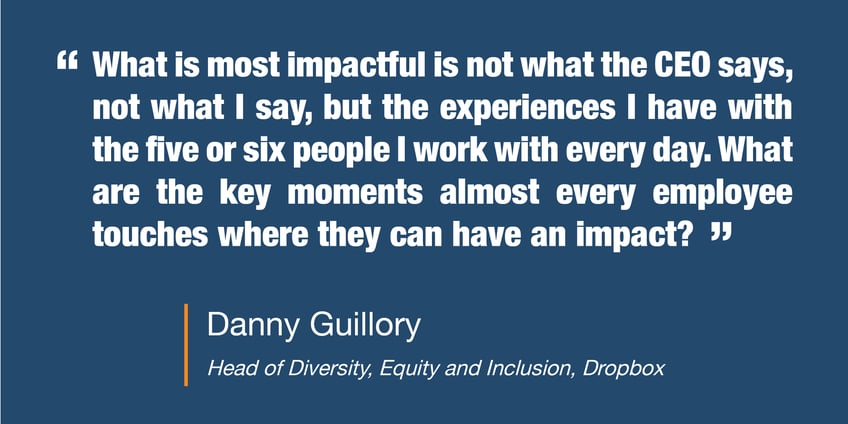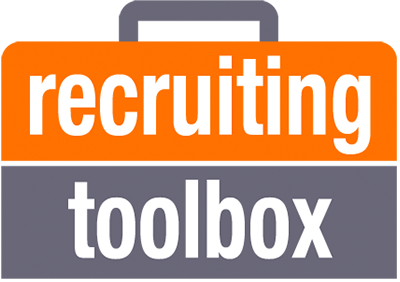Recruiting Toolbox Blog
12 Conversations to Help Recruiters Build More Inclusive Hiring Teams

I was speaking with a corporate recruiter the other day who is passionate about creating a diverse and inclusive workplace. We were discussing the events of the recent weeks -– the pandemic, the demonstrations and calls for action around the country, and the painful truths in our society that are now exposed for all to see. As I listened, what struck me most was something we had in common – a feeling of powerlessness. It can be natural to feel powerless when we can’t change things for the entire company, when we don’t lead Diversity and Inclusion, or we don’t have a budget that we can dedicate to solving this problem. But we don’t have to feel that way. We can do something.
As recruiters and recruiting leaders, we are in a unique position to lead and promote a culture of inclusion, one candidate and one hiring team at a time. We have an opportunity to learn more about the people around us and help each other grow into more caring, thoughtful, and understanding friends and colleagues. An opportunity to help build a truly inclusive workplace.
As a recruiting consultant at Recruiting Toolbox, I spend my time learning how companies identify, find, and retain the best talent. And companies are generally trying to do the right thing. They have good intent and they say, “We are nothing without great people.” “Our greatest asset is our people.” “We are committed to Diversity and Inclusion.” These statements are important starting points, but true progress requires a commitment to action.
“As HR practitioners, we take for granted when we say to leaders that they need to be inclusive that they know what we mean.”
Dianne Campbell
VP – Enterprise Leadership and Global Diversity and Inclusion, American Express
It’s time to move beyond talking about the future and get specific about the now. Here are 12 conversations we as recruiters should have with our hiring managers and their hiring teams to help create a more inclusive work environment.
- Build awareness: Ensure that all hiring teams know why diversity and inclusion is important to our business. Frame it as a business imperative, not an HR project or a recruiting initiative. If your company is not doing articulating this yet, talk with your hiring teams about taking a stand for what is right.
- Measure success: Discuss the performance metrics that help us measure our progress in Diversity and Inclusion. Show this hiring team where they are in relation to the company and other hiring teams. If they are leading, understand how and why they got to this point. If they are lagging, talk about why and help them know how to improve.
- Tell authentic stories of leadership: Share examples of where company and functional leaders are inclusive in how they build teams, how they listen more than they talk, and how they promote and reward people that are different than themselves.
- Educate about internal resources: Make teams aware of the resources within the company that help drive an inclusive environment. Internal experts, training materials that are underutilized, and best practices are just some of the resources that are available at nearly every company.
- Train all interviewers: Every interviewer should know how to do evidence-based interviewing before they meet any candidate. They should understand how to structure the interview, how to ask meaningful questions, and have a key role in calling out bias if they see it anywhere in the process. If you have this kind of interview training already, then talk with your hiring manager about making this mandatory on their team before anyone interviews.
- Establish clear hiring criteria: What makes someone good at our company and in this role. What are the technical skills? What are the soft skills? What can we ask to determine if this person is likely to be successful here? Establish the criteria clearly before we meet candidates, not after.
- Interview for inclusion: If an inclusive environment is important to us, we need to let candidates know that it is important and ask questions to see how inclusive they are. Help the team develop behavioral and situational questions to gather evidence of a candidate’s performance as an inclusive leader or colleague.
- Challenge pedigree as a proxy: What school someone went to, or what company they worked for is not a proxy for good or talented or smart. Let’s actually interview them for success here at our company and in this open role, not just assume that because someone else gave them an opportunity that we should do the same.
- Challenge the idea of “culture fit”: Culture is not a static thing. It changes all the time in our company and on our team. It changes every time someone leaves, every time someone joins, and every time we make promotion decisions. Culture is dynamic. It’s not about who “fits” in this box we call culture. It is about what this person brings to our culture. Are they adding something that the team needs?
- Lead hiring team debrief meetings: When teams meet and share their hiring decision and the evidence they gathered; we get better insights as to the quality of interviewing being done by this team. By doing this as a continual practice, we build a culture of accountability and awareness, and the entire team benefits over time. As recruiters, lead this discussion. Make sure all people are heard, address potential bias head on, and course correct as needed.
- Iterate the process: We need to have a hiring process that helps our company and our team learn what they need to know about a candidate to make a high quality hiring decision. Likewise, candidates need to learn about us and be able to make the decision that is right for them. Personalize the process where possible. Address candidate concerns openly and honestly, and actually show candidates how inclusive we are by living that inclusion during the process.
- Evaluate interviewers and make changes when needed: Not everyone is ready, willing, and able to commit the time and energy to interviewing in this way. If not, address that with them and do what is right for the company, the team, and the candidates we meet. Making hiring decisions is not everyone’s strength or area of interest. That’s fine - there are plenty of other roles on the team that a person can play. But we should play a key role to ensure we have the best interviewers making hiring decisions going forward.
By doing the work of leading our hiring teams to a more inclusive and productive way of hiring, we will help our companies be what they say they want to be. More importantly, we will show candidates and employees what our commitment to diversity and inclusion is. And we may inspire other teams and other companies to do the same. It’s all about progress and empowering all of us to recruit better.
Will it work for every hiring team or every culture? The hard answer is “it depends.” It will depend on how willing we are to look at these issues and then actually do something about them.
If we are in a car that is drifting off the road, we overcorrect to steer ourselves back into the proper lane. The question for us and our hiring teams is simple: Are we willing to overcorrect for how we have drifted off the road in how we interview, hire, and promote in our culture?
If we keep making the same hiring decisions and using the same processes that we always have, then nothing will change. But if we commit to real, meaningful corrections, then we have a chance. It will take corrections that make some people uncomfortable, or that some people see as overreactions. When we are driving off the road, we need a major correction to get back in our lane. We should be honest with ourselves and hiring teams about that.
This kind of change is not about incremental change that is easy. This is going to require some people being uncomfortable and learning to grow in ways that may be a challenge for them. Support them in their journey.
It is going to require teams to take a stand for what is right and change the behaviors that they have built over many years. Some teams will be more ready for that than others. This is why it’s going to take recruiters and recruiting leaders to lead the way - one hire, one candidate, and one uncomfortable step at a time.
If you are taking other steps that you want to share, please do so in the comments or share your own post with me. We need all the good ideas we can get.
